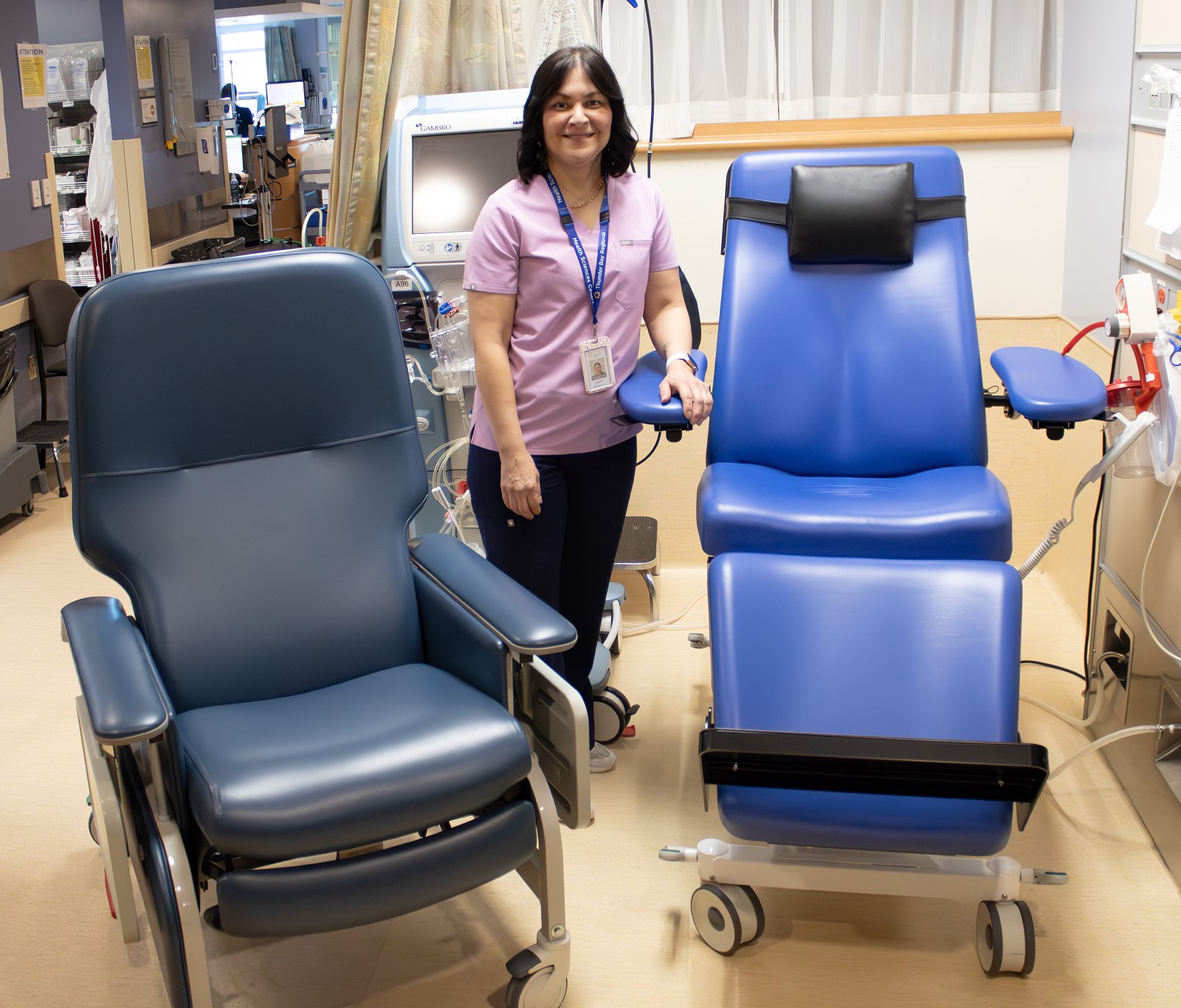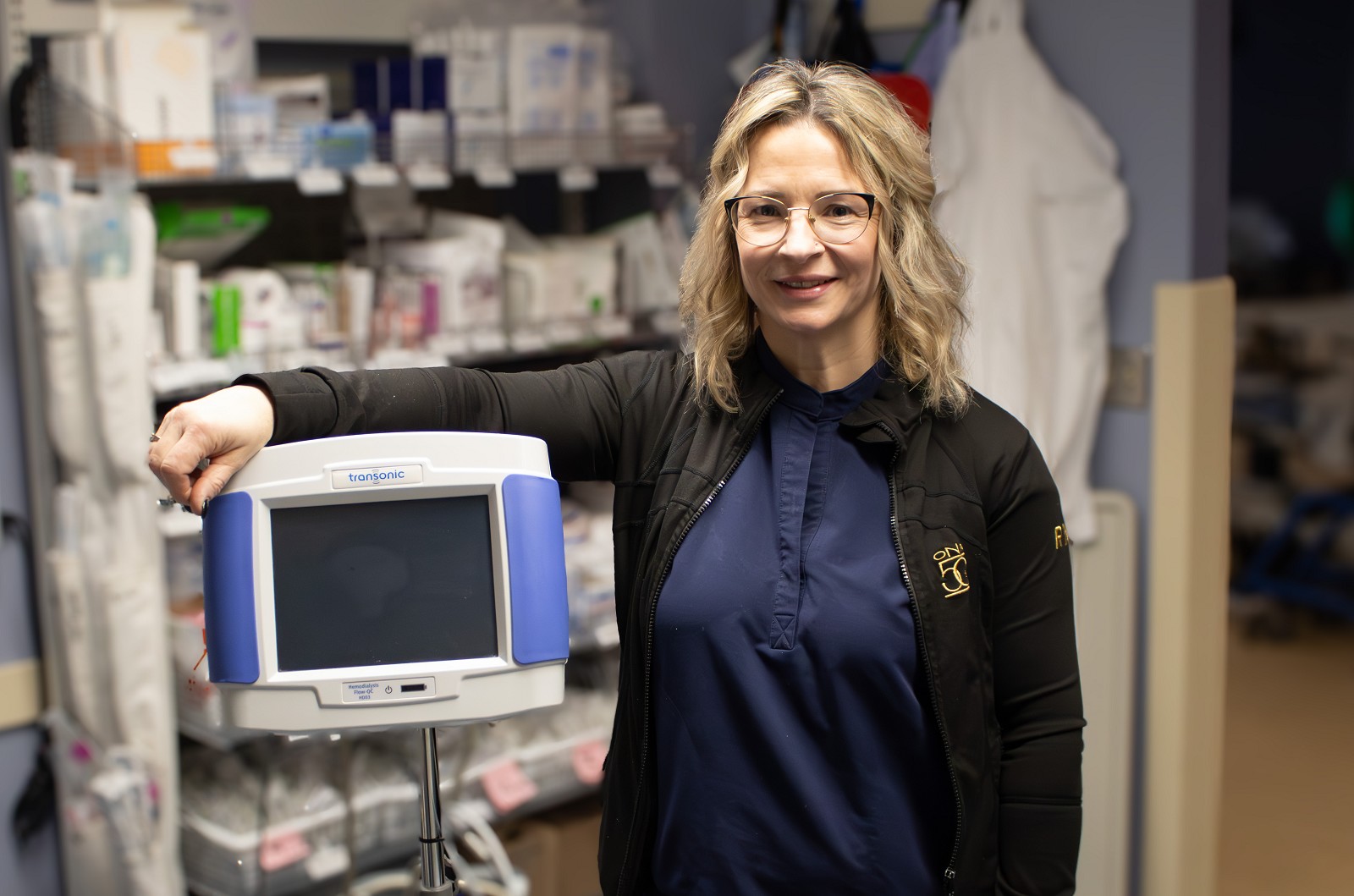Your Impact: You're Helping More Renal Patients to Get the Dialysis They Need Closer to Home
Published Sunday, March 30, 2025

Leanne Allen, RN, Renal Services, stands beside the new dialysis recline chair (right), which replaces the aging chair (left) at the Thunder Bay site, enhancing comfort for patients.
It's hard to understand how disruptive dialysis can be to your life unless you've lived it. Those disruptions increase dramatically for people living outside of Thunder Bay or one of the Northwest Regional Renal Services' three satellite sites in Fort Frances, Sioux Lookout, and Kenora. Patients are forced to move away from friends, family, and supports for dialysis treatment. The experience is worse for people who must also overcome cultural and language barriers along with the challenges of moving to a big city.
What if there was a way to allow renal patients to get the dialysis treatments at home? Thanks to thousands of Thunder Bay Regional Health Sciences Foundation donors, 50/50 ticket supporters, and event participants like you, they can!
Home Haemodialysis Program allows patients to do their own dialysis with the help of a family member or friend, right in their own home. That means no more travel or moving communities, no more leaving loved ones, no more barriers to care.
“We have close to 30 patients in the Home Hemodialysis Program,” said Marina Bruno, Clinical Nurse Specialist, Northwest Regional Renal Services at the Thunder Bay Regional Health Sciences Centre. “That's 30 patients that can get their dialysis at home.”
There are some pre-requisites to Home Haemodialysis. Patients need to have stable electricity and a good water supply. They also need approximately eight weeks of training, which is done in a training facility at the Hospital.
Other options are opening up too, thanks to this program, including for fly-in communities. In Pikagikum First Nation, Renal Services helped set up a safe space at the new Knowledge Keepers Elders' Complex so that patients could do their dialysis.
However, the success of the Home Haemodialysis Program means it has outgrown the training facility, and often there is a waiting list for spaces. Unfortunately, most patients need dialysis now, so they can't wait at home. Generally, people in kidney failure require dialysis three times per week for six to four hours per session. Patients have to stay in Thunder Bay for dialysis until a training spot opens up.
“Patients are coming from northern communities spending many months away, often living in a hotel away from their families,” Bruno said.
With your help, the facility will be expanding from three to five training spaces this summer during a complete renovation including new plumbing and electrical.
“Renovations to the training facility and opening two extra spots brings more people home,” she said.
This isn't the only impact you've had on Renal Services over the past year. The Health Sciences Foundation also directed your donations to other vital pieces of equipment including a new dialysis chair to keep patients comfortable during long treatments, ice machines in Sioux Lookout and Fort Frances to help quench thirst without over-hydrating during treatment, and a new Transonic Flow Meter for preventative monitoring.

Audra Shaw, RN, Renal Services, stands with one of three new Transonic Flow Meters, devices that help monitor blood flow during dialysis to ensure effective treatment.
“Renal services in particular work differently here than in southern Ontario,” Bruno said. “Down east, patients don't usually have to travel far for dialysis. But here, it can take hours each way. It's so long that patients need to move to Thunder Bay or one of the other satellite sites. The more people we can treat in their home communities, the better.”
Article by Graham Strong